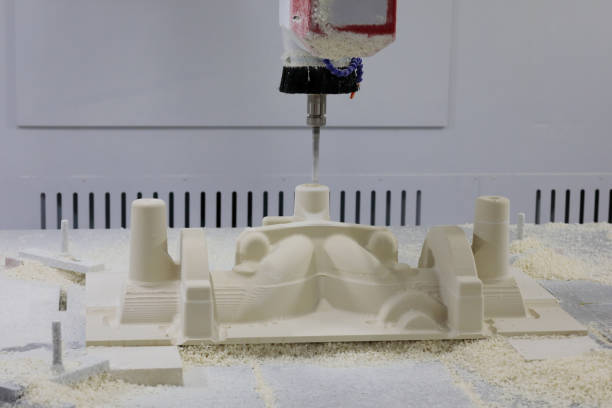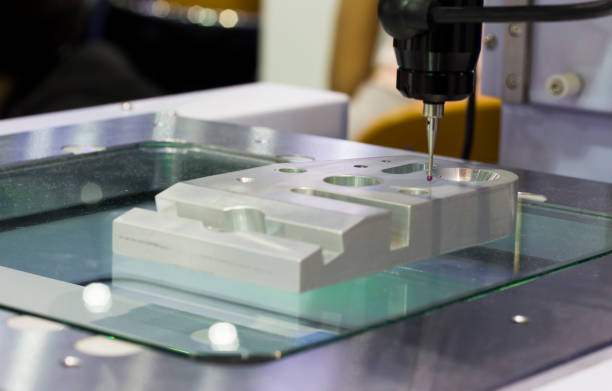- Jul 07, 2025
The rapid mold design process has become a cornerstone of modern manufacturing. As industries strive for efficiency, reduced lead times, and high precision, the demand for faster and more efficient mold design continues to grow. From automotive and electronics to consumer products and medical devices, mold design plays a pivotal role in the production of high-quality components. This article will delve into the concept of rapid mold design, its benefits, the key technologies driving this process, and how it’s transforming manufacturing operations.
What is Rapid Mold Design?
Rapid mold design refers to the use of advanced techniques and technologies to create molds in a shortened time frame without compromising precision and performance. Traditionally, mold design could take several weeks or even months to complete. However, with the advent of 3D modeling software, additive manufacturing, and advanced CNC machining, the entire process can now be compressed, offering faster turnaround times.
In industries where product development cycles are accelerating, rapid mold design helps companies meet market demands more efficiently. The goal is not only to speed up production but also to enhance accuracy, reduce costs, and improve product quality.

Key Technologies Driving Rapid Mold Design
3D Modeling Software
One of the most significant advancements in mold design is the development of 3D CAD software. These tools allow designers to create highly detailed virtual models of molds before they’re physically produced. By simulating the entire molding process, designers can identify potential flaws, optimize the design, and make necessary adjustments in the virtual space, reducing the need for costly revisions during physical production.Industry Data: According to Market Research Future, the global CAD software market is expected to reach USD 14.6 billion by 2023, growing at a CAGR of 6.1%. This growth is driven by the increasing adoption of 3D modeling in various manufacturing sectors, including mold design.
Additive Manufacturing (3D Printing)
Additive manufacturing or 3D printing has revolutionized mold design by allowing the rapid prototyping of molds and parts. This technology allows manufacturers to create complex shapes and features that are difficult or impossible to achieve using traditional methods. The use of 3D-printed molds helps in quickly testing and iterating designs before producing final metal molds.Additive manufacturing also supports the creation of low-volume molds for small batch production, reducing the cost and time associated with traditional tooling methods.
Industry Data: The global 3D printing market is expected to grow from USD 12.6 billion in 2020 to USD 63.5 billion by 2026, at a CAGR of 28.6%. This rapid expansion is a clear indication of the increasing importance of additive manufacturing in various sectors, including mold design.
CNC Machining
CNC machining plays an essential role in mold making by providing high precision and accuracy. CNC machines can fabricate complex mold components with tight tolerances, making them ideal for creating molds that require intricate detail. By automating the machining process, manufacturers can significantly reduce the time and labor involved in mold production.Industry Data: According to Grand View Research, the global CNC machining market size was valued at USD 63.4 billion in 2020 and is expected to expand at a CAGR of 8.1% from 2021 to 2028. This market growth highlights the increasing demand for CNC machining in industries such as mold making, where precision is key.
Simulation and Virtual Prototyping
Modern mold design processes also incorporate simulation software to test and validate the mold design before physical production begins. Virtual prototyping and simulation tools allow engineers to simulate the molding process, identifying potential problems like air pockets, material flow issues, or thermal distortion that could affect the final product.These simulations help optimize the mold design for better functionality and performance, reducing the need for physical prototypes and speeding up the entire process.
Advantages of the Rapid Mold Design Process
Reduced Lead Time
One of the most significant benefits of rapid mold design is the reduction in lead time. By using advanced software, 3D printing, and CNC machining, the time taken to design, prototype, and produce a mold can be drastically reduced. This is particularly important in industries with short product life cycles, such as consumer electronics or automotive parts.Industry Data: A study by Wohlers Associates found that 3D printing can reduce product development time by up to 70%, which directly translates to faster time-to-market for new products.
Cost Efficiency
Traditional mold-making techniques are expensive, especially for complex designs. The rapid mold design process helps reduce these costs by eliminating the need for expensive manual labor and tooling. Furthermore, the ability to prototype quickly with 3D printing and virtual simulations means that design flaws can be identified early, saving money on physical revisions.Industry Data: According to a report from Smarter Manufacturing, companies using rapid prototyping techniques have reported up to 50% savings in development costs.
Enhanced Precision and Quality
3D printing, CNC machining, and simulation technologies enable manufacturers to achieve high precision in mold design. These advanced technologies reduce human error, allowing for more accurate molds that meet tight tolerances. The result is higher-quality products with fewer defects, improving customer satisfaction.Flexibility in Design
Rapid mold design allows for more flexible and iterative designs. In traditional mold-making processes, changing a design after the mold has been created can be costly and time-consuming. However, with modern technologies, designers can make quick adjustments to the mold design, incorporating feedback and improving product quality at any stage of the development process.
How Rapid Mold Design is Transforming Industries
The rapid mold design process is transforming industries by enabling faster product development, reduced costs, and improved product quality. Some of the key industries benefiting from this technology include:
Automotive: With the shift toward electric vehicles and new manufacturing technologies, the automotive industry is adopting rapid mold design to create lightweight, high-performance components at a faster pace.
Consumer Electronics: As consumer demand for innovative gadgets increases, rapid mold design enables electronics manufacturers to bring new products to market quickly, while maintaining the precision and quality that modern consumers expect.
Medical Devices: In the medical industry, rapid mold design plays a critical role in developing high-quality, safe, and efficient medical devices. It helps in producing complex parts with tight tolerances and customized features that are essential for the medical field.
Aerospace: Aerospace manufacturers use rapid mold design to create lightweight, high-strength components for aircraft and spacecraft, reducing production time and costs while maintaining safety and performance standards.
Conclusion
The rapid mold design process has become an essential part of modern manufacturing. With technologies like 3D printing, CNC machining, and simulation software, manufacturers can now produce molds faster, more accurately, and more cost-effectively than ever before. By adopting these innovative techniques, industries can accelerate product development, improve quality, and reduce costs, giving them a competitive edge in the global market.
As the manufacturing industry continues to evolve, the importance of rapid mold design will only increase. For companies looking to stay ahead of the curve, investing in these technologies is a smart strategy to enhance their efficiency, precision, and overall product quality.


